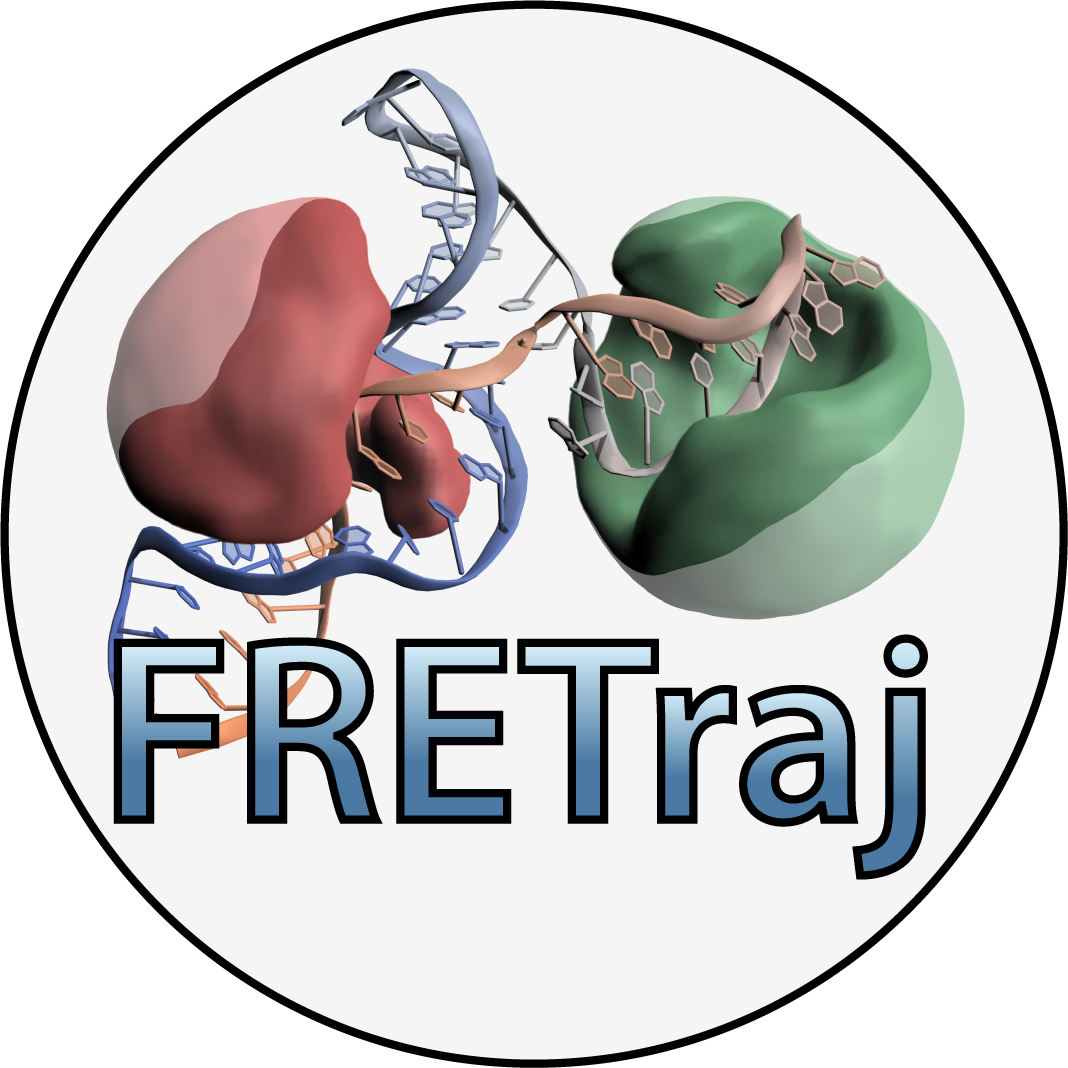Making FRET predictions#
Once a donor and acceptor ACV is calculated, we can predict a mean transfer efficiency \(\langle E\rangle\) based on the distance between the two volumes.
Here, \(\mathbf{R}_{D,i}\) and \(\mathbf{R}_{A,j}\) are the coordinate vectors of the points \(i\) and \(j\) in the donor and acceptor volume [4, 5].
R0: Förster radius of the dye pair
# distances: number of distances to sample for the FRET calculation. The algorithm chooses n pairs of randomly distributed points in the donor and acceptor cloud and calculates their distance
choose the donor and acceptor cloud from the drop down
Calculate FRET: start the FRET calculation. The mean FRET efficiency \(\langle E\rangle\), the mean inter-dye distance \(\langle R_{DA}\rangle\) as well as the distances between the mean dye positions \(\langle R_{MP}\rangle\) or the two attachment sites are displayed in the table. The FRET parameters are also saved to a JSON file.
Note
The style of the ACV clouds can be tuned with the ACV visualization settings:
contour levels of the accessible and contact volume
b-factor and the gaussian resolution define the smoothness of the cloud
grid buffer around the ACV
transparency of the cloud
